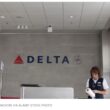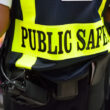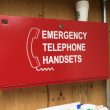STILL WAITING
It’s been a long road for wireless enhanced 911, or E911. When the FCC first mandated that commercial wireless operators deploy location technology to pinpoint callers dialing 911 from their cell phones in 1996, those operators were pulled along kicking and screaming. They fought for waivers to the deployment deadlines — and still missed many deadlines, even after getting those waivers. Meanwhile, public-safety answering points, or PSAPs, complained about operators’ lack of responsiveness, and the FCC levied millions of dollars in fines.
More than 10 years later, operators are quite amicable, coverage is wide, and many large PSAPs are running smoothly, but wireless 911 implementations are far from perfect. Aside from the continual problem plaguing PSAPs, i.e., lack of funding, location accuracy is atop the FCC’s agenda these days.
In April, the Association of Public-Safety Communications Officials released a report from Project LOCATE — APCO’s study of location data from wireless carriers that was funded with a $750,000 grant from the Public Safety Foundation of America — that concluded location-based wireless emergency service is not always reliable and needs an overhaul.
“There is a clear expectation that the PSAP, as well as traditional first responders, will have consistent and accurate locating data delivered with all wireless 911 calls to the PSAP,” the report states. “The wireless location accuracy performance of the carriers in the designated ‘PSAP Test Area’ did not meet these expectations.”
Indeed, the tests — during which seven PSAPs across the nation (see map on page 12) each received 203 calls per carrier in their respective territories — revealed that wireless 911 location information submitted to PSAPs varied depending on the operator and the topography of the region.
“The carriers can do a very good job of providing location information — it depends on the conditions and a whole litany of variables,” Nancy Pollock, chairwoman for Project LOCATE, said during the APCO Winter Summit held earlier this year in Orlando. “For me, the disappointing piece … is that it wasn’t always consistently provided. That’s the thing we have to learn to deal with and try to understand what conditions [move the data] into that inconsistent area.”
Project LOCATE’s conclusion is particularly sobering, as 911 calls from mobile phones are outpacing those from landline phones, and a growing number of Americans are opting to use mobile phones as their only phone. According to the National Emergency Number Association, more than 200 million 911 calls are made per year on average. NENA estimates that more than half of those are made from wireless handsets.
“It is a very difficult challenge to get accuracy to a specific level at every PSAP in the U.S.,” said APCO President Wanda McCarley, who testified in April during a Senate Commerce Committee hearing on problems associated with wireless and voice-over-IP 911.
Drilling down
An underlying issue that the FCC is addressing concerns a lack of a standard measurement methodology. When the FCC set its accuracy requirements for operators, it did not mandate how the measurements showing compliance with those requirements should be conducted. Now the commission has issued a Notice of Proposed Rulemaking to tighten these requirements.
Most operators aggregate their accuracy measurements at the state level and average the results over a wide geographic area. Urban areas generally have higher volumes of calls and a greater density of cell sites — more cell sites in a given area generally improve the accuracy of location calculations — versus rural areas. Consequently, when those urban readings are combined with rural readings and then averaged, the results look more accurate than they really are.
“Our position has consistently been to measure accuracy at the PSAP level. That’s really where the public is impacted,” McCarley said.
Currently, the FCC is seeking comment on proposed rules that will mandate testing of E911 accuracy at the local emergency call centers, rather than at the state level. The FCC also is examining solutions that will provide more accurate location of wireless 911 callers.
On this point, the operator community has been relatively silent so far.
“We’re obviously looking at the current regulation, possible additional regulation and potential costs to our customers and business,” said Jeffrey Nelson, executive director of corporate communications for Verizon Wireless.
Indeed, the fear for operators is the additional costs that could be borne by a local-testing mandate. Tim Lorello, senior vice president and chief marketing officer for Tele-Communications Systems Inc., which provides E911 services as well as messaging and location infrastructure for wireless operators, said the cost implications of testing at the PSAP level could be significant for operators if they are required to conduct thousands of tests.
“Carriers are our customers and care a hell of a lot about public safety, but there’s definitely a difference of opinion,” Lorello said. “Is there a common ground? TCS is in the middle. We try to keep the costs down for carriers, but we also recognize public safety needs something. It’s tough.”
It’s a fear that FCC Commissioner Jonathan Adelstein also shares. In a recent statement, Adelstein said it was troublesome to advance the goal of PSAP location accuracy compliance without considering the disruption to both operators and governments that may be caused by setting such a rule.
“I believe that it is premature to support the several tentative conclusions in this item before the commission has been presented with a full record and conducted its own review of current data and future technology,” Adelstein said in a statement. “At a minimum, we should put in place a series of hearings and reports that will guide us to develop benchmarks and targets that will pave the way to a new approach to accuracy compliance. Each of these can be done on an expedited basis.”
The National Association of State 911 Administrators recently weighed in on the topic, issuing a similar warning that should the commission adopt Phase II accuracy testing requirements that currently available technologies cannot meet — such as a requirement for PSAP-level testing — the action would result in unfair burdens for both carriers and state governments.
“It is important to remember that the current accuracy requirement (distance measurement) was based on the promise of the location technology before it was actually developed as a solution,” the association warned in an FCC filing in May. “To hold a new technology solution to this same requirement would be highly inappropriate. … To adopt an accuracy testing process that cannot be achieved at this time not only puts the carrier in a compliance limbo, but also puts many states in a budgetary limbo until someone can figure out how to achieve the requirement.”
Lorello believes there are automated techniques that can be used at the local level to test the accuracy of wireless 911 calls without conducting thousands of tests in every county. For instance, 911 dispatchers are trained to take information from callers about where they are located. The majority of time, callers can identify their location, and if that location doesn’t match the location delivered by the operator, it should be flagged as a problem.
“If there is enough flagging, couldn’t that also be a set of data that points to the need for accuracy improvement in certain areas?” Lorello asked. “We have to balance cost to the carrier and benefit to the public.”
Merging technologies
E911 technology itself also presents accuracy challenges. Factors that can impact the accuracy of the location data include the type of handset, the type of network and tower density — all challenges that stem from the FCC’s decision several years ago to allow operators to use two different types of location technology.
“The capabilities of these two systems are very different, and both have good qualities and some limitations,” said Brian Varano, manager of marketing communications for TruePosition, which provides network-based location technology to AT&T and T-Mobile USA.
GSM operators AT&T (formerly Cingular Wireless) and T-Mobile USA use network-based technology, known as uplink time difference of arrival (UTDOA), which locates wireless phones by comparing the time it takes a mobile station’s radio signal to reach several location measurement units (LMUs) installed at an operator’s base stations.
The advantage is that the technology works with legacy handsets, but the drawback is that it doesn’t always work well in rural areas where there are fewer base stations and towers to measure a signal. Federal law and the FCC require that providers using the network method should provide accuracy to within 300 meters for 95% of calls and within 100 meters for 67% of calls.
In contrast, CDMA operators such as Verizon Wireless and Sprint Nextel opted for handset-based location technology based on global position system (GPS) technology that uses satellites to determine the location of a phone. This solution offers greater accuracy but can’t pinpoint callers indoors — because the signal is too weak — and may be ill suited in the urban canyons common to cities.
However, most of the GPS technologies currently deployed include a fall back to Advanced Forward Lateral Triangulation (AFLT) or Assisted GPS (A-GPS) technology to achieve better accuracy. Accuracy rules require these handset-based systems to provide accuracy within 150 meters for 95% of the calls and 50 meters for 67% of calls.
“There is definitely a need to push the wireless carriers to implement more accurate technology to be able to accurately identify locations of people making 911 calls,” said Vijay Kanchi, partner with the wireless practice at BusinessEdge Solutions, which works with both wireless operators and service bureaus that handle E911 processes. “Handset-based technology is much more accurate so that is where the future is at.”
On that note, the FCC is seeking public comment on E911 technological advances and the prospects for an across-the-board industry deployment of a hybrid approach to E911, which will draw on both handset- and network-based techniques.
TruePosition has been readying itself for such a mandate by developing a hybrid solution that includes both GPS and UTDOA. Varano said the company’s own testing showed that a combination of the two technologies yielded sub-25-meter accuracy compared with A-GPS, which showed sub-50-meter accuracy.
A better way
Still, any solution that leverages GPS remains a scary proposition for those subscribers who live in apartment buildings and opt to use their mobile phones as their only phone. However, some promising technologies are on the horizon.
The European Satellite Navigation Industries and the European Space Agency are deploying the Galileo positioning system for the European Union as an alternative to the U.S.-operated GPS constellation. Galileo is expected to provide better accuracy concerning location data for all wireless users than what is currently available through GPS, but it won’t be operational until about 2012.
In the meantime, Lorello said TCS is working on initiatives such as using short messaging service (SMS) technology to initiate a 911 call because SMS needs less bandwidth than a mobile phone call and therefore could be used where coverage is poor. Theoretically, according to Lorello, an SMS message could be sent to an application outside of the network that then pinpoints the location of the sender.
In addition, as phones begin to include Wi-Fi capabilities, companies such as Skyhook — which provides a software-centric positioning system — could leverage a nationwide database of known Wi-Fi access points to calculate the location of any Wi-Fi-enabled device.
Meanwhile, Rosum has developed technology that integrates signals from existing commercial TV towers with signals from GPS satellites to support greater accuracy in all environments, including indoors.
“We measure the time of flight from a transmitter to a receiver. … If you look around on the hilltops you will see TV transmitters, and they are designed to punch signals through walls,” said John Metzler, Rosum’s business development director.
With a receiver engineered to pick up both GPS and the combined TV-GPS signals, Metzler said Rosum has created a powerful positioning system that can work indoors and show caller positions in 3-D; for example, the system can indicate the exact floor of a building upon which the caller is located. He added that because TV receivers are becoming common in handsets — because carriers are heavily marketing mobile TV services — the TV-GPS technology can be deployed at lower cost. Already, Rosum’s technology has been tested successfully in the San Francisco Bay region and in Northeast locations from New Hampshire to Washington, D.C.
Indeed, TV-GPS has caught the attention of the Pentagon’s Defense Advanced Research Project Agency, and defense contractor Boeing. Boeing awarded Rosum a contract in April to develop its technology for use by soldiers on the ground — including those fighting in dense urban environments, where GPS technology often proves ineffective, or where the signals might be intentionally jammed by the enemy. Boeing said it would use Rosum to research myriad ways to supplement or replace GPS.
‘Operators would be very unhappy’
But while these technological innovations are heartening, cost — as often is the case when the first responder and commercial worlds collide — still remains a counterweight. While wireless operators must contemplate the significant cost of system upgrades, PSAPs — which already are struggling for funding — must update interfaces and computing infrastructure to support new technology.
“Think about the early years and the move to Phase II. There were regulatory mandates pushing technology, but in a certain sense, the regulatory mandate moved faster than the technological capability to do it,” said Ken Hyers, analyst with Technology Business Research. “Operators can’t be expected to subsidize location technology that might cost $25 or $30 [per device]. … Operators would be very unhappy.”
The common thinking is that operators can leverage their E911 investments to offer commercial location-based services, which are finally heating up in the market. But commercial location and E911 location remain separate silos, even though operators can leverage the same base-station almanacs and SS7 infrastructure. Despite this, could the increased demand for commercial services spur operators’ desires to deploy more accurate location technology for wireless 911 without a mandate? TruePosition’s Varano thinks it’s possible — to a degree.
“I think what will end up happening is a lot of location infrastructure will be deployed with different overlays for different services,” he said “All are still in a wait-and-see mode, but accuracy could become a differentiator in the market.”
BusinessEdge’s Kanchi said much has changed in the commercial world when it comes to location-based services than when operators were first pushed to deploy E911 services. For instance, smart phones are capable of supporting multiple services and color maps, and high-speed networks can transmit data faster.
“It behooves carriers to provide more interesting and relevant information to a subscriber and market it and make some money off of it,” Kanchi said.
Haves and have-nots
While Phase II is common across the populous Eastern U.S., much of the rural West lacks even Phase I service.
Wireless E911 basics
Phase 0: A call that usually provides no location coordinates.
Phase 1: A call that provides the location of the cell site handling the wireless E911 call.
Phase 2: A call that provides latitude and longitude coordinates of the wireless E911 caller’s device.
Source: Project LOCATE

















